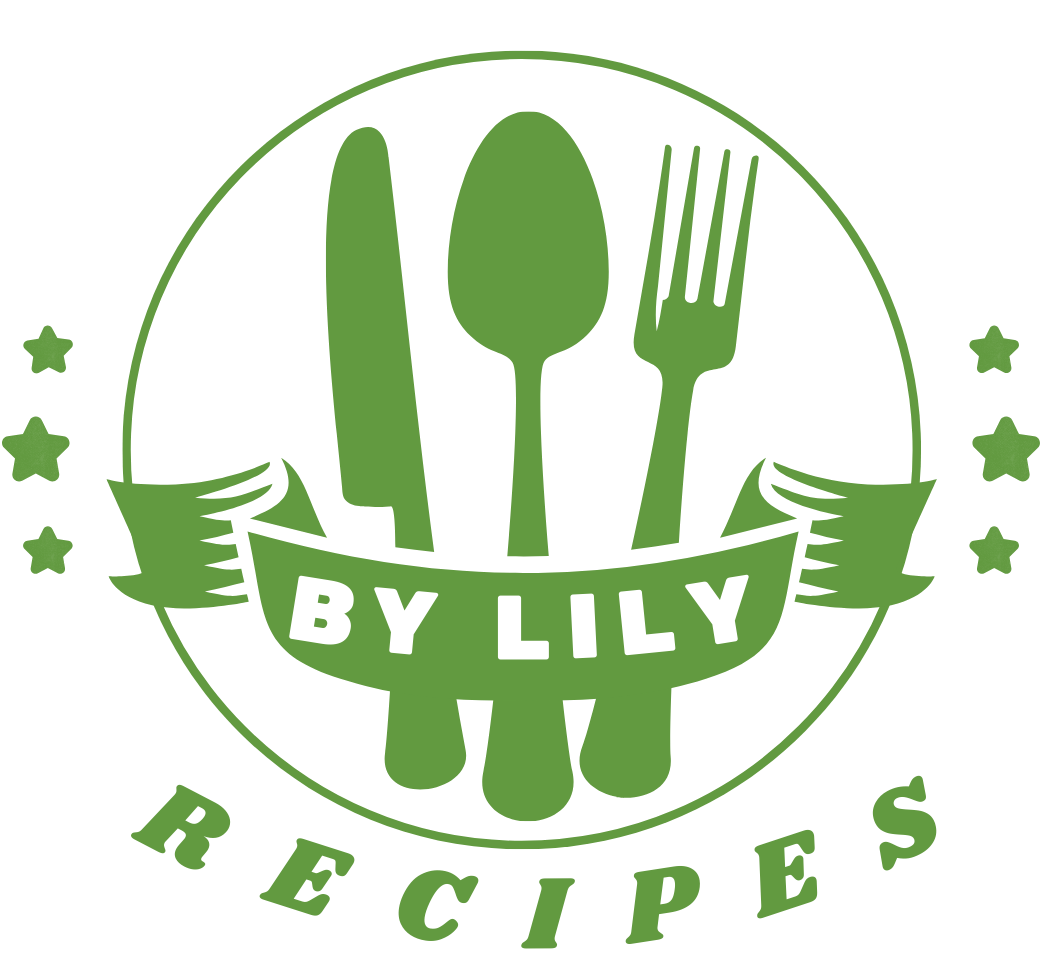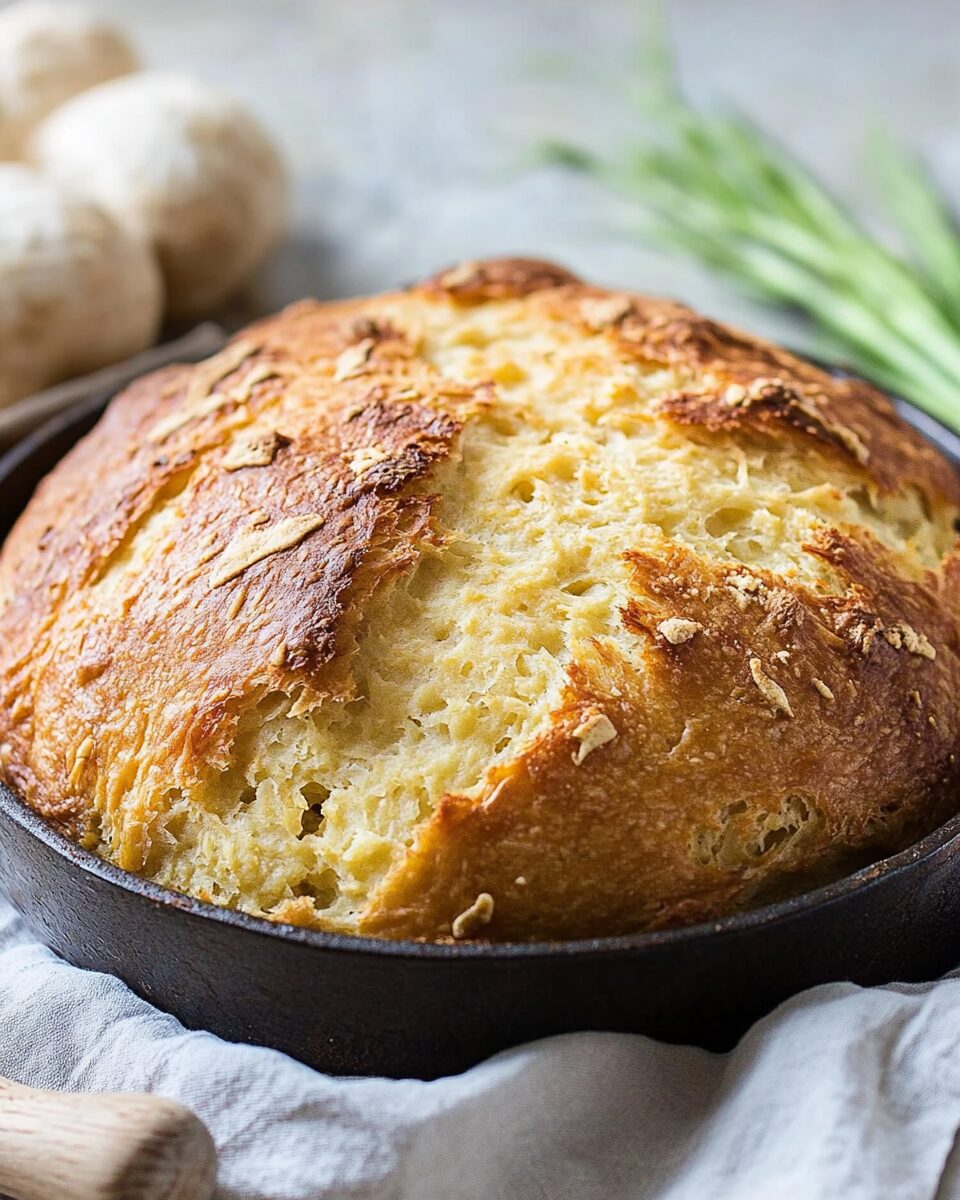Irish Potato Bread, also known as “Potato Farls” or “Fadge,” is a traditional Irish recipe made with mashed potatoes, flour, and butter. It’s a soft, hearty bread often enjoyed as part of an Irish breakfast or simply toasted with butter. This simple and delicious bread is a great way to use leftover mashed potatoes and brings a comforting, rustic flavor to the table.
Full Recipe:
Ingredients
- 2 cups mashed potatoes (preferably warm)
- 1 cup all-purpose flour (plus extra for dusting)
- 2 tbsp butter (melted)
- ½ tsp salt
- ½ tsp baking powder (optional, for extra fluffiness)
Directions
- In a mixing bowl, combine the warm mashed potatoes, melted butter, salt, and baking powder (if using).
- Gradually add the flour, mixing until a soft dough forms.
- Lightly flour a clean surface and knead the dough gently for 1-2 minutes.
- Roll out the dough to about ½-inch thickness and cut into quarters or circles.
- Heat a non-stick or cast-iron skillet over medium heat and lightly grease it with butter or oil.
- Cook the potato bread pieces for 3-4 minutes on each side until golden brown and slightly crisp.
- Serve warm with butter, jam, or as part of a traditional Irish breakfast.
Nutrients (Per Serving)
- Calories: 180
- Carbohydrates: 30g
- Protein: 4g
- Fat: 5g
- Fiber: 2g
- Sugar: 1g
- Sodium: 200mg
Enjoy this warm and comforting Irish classic!
Irish Potato Bread: A Traditional and Comforting Delight
Irish Potato Bread, also known as “Potato Farls” or “Fadge,” is a classic Irish dish that has been enjoyed for generations. This simple yet flavorful bread is a staple in many Irish households, offering a delicious and resourceful way to use leftover mashed potatoes. Whether served as part of a traditional Irish breakfast or enjoyed on its own with a generous spread of butter, Irish Potato Bread is a warm and comforting treat.
The History of Irish Potato Bread
The origins of Irish Potato Bread can be traced back to Ireland’s agricultural roots, particularly during the 18th and 19th centuries when potatoes were a primary food source for the Irish population. The simplicity of the recipe made it a practical choice for many families, especially in rural areas where ingredients were limited. Potatoes were cheap, abundant, and versatile, making them an essential part of the Irish diet.
Traditionally, Irish Potato Bread was cooked on a griddle or skillet rather than baked in an oven. This method was common in households that did not have access to large ovens. The bread was often made in large batches and stored to be eaten throughout the week, providing a hearty and sustaining meal option.
Why Irish Potato Bread is Special
Irish Potato Bread stands out for its soft texture, rich flavor, and incredible versatility. Unlike traditional wheat-based bread, it has a slightly denser consistency due to the mashed potatoes, making it incredibly satisfying and filling. The combination of simple ingredients creates a comforting and homely taste that pairs well with a variety of toppings.
One of the best things about this bread is how easy it is to prepare. With only a handful of ingredients, it can be made in a matter of minutes. It also serves as an excellent way to repurpose leftover mashed potatoes, reducing food waste while creating something delicious.
How Irish Potato Bread is Enjoyed
There are countless ways to enjoy Irish Potato Bread. In Ireland, it is often served as part of a full Irish breakfast, alongside sausages, bacon, eggs, and black pudding. The slightly crisp exterior and soft, fluffy interior make it perfect for soaking up sauces and flavors.
For a simpler approach, many people enjoy it toasted with butter and jam, or even as a savory snack with cheese and smoked salmon. It can also be used as a side dish to accompany soups and stews, adding a hearty touch to any meal.
Tips for Making the Perfect Irish Potato Bread
- Use Fresh, Warm Mashed Potatoes: Freshly mashed potatoes provide the best texture, ensuring the dough is soft and pliable. If using leftover mashed potatoes, warming them slightly before mixing can help achieve the right consistency.
- Don’t Overwork the Dough: Kneading the dough too much can result in a tougher texture. A light touch will help keep the bread soft and tender.
- Cook Over Medium Heat: Too high of a heat can burn the exterior while leaving the inside undercooked. A steady medium heat allows for even cooking and a golden-brown finish.
- Experiment with Add-Ins: While the traditional recipe is simple, you can experiment by adding herbs, cheese, or even a sprinkle of garlic powder to enhance the flavor.
Health Benefits of Irish Potato Bread
Despite being a comfort food, Irish Potato Bread offers several nutritional benefits. Potatoes are a good source of vitamins and minerals, including vitamin C, vitamin B6, and potassium. They also provide dietary fiber, which aids digestion and promotes gut health.
By making this bread at home, you have control over the ingredients, allowing you to use whole-grain flour for added fiber or reduce the amount of butter for a lighter version. Compared to commercially processed bread, homemade Irish Potato Bread is free from preservatives and artificial additives.
The Cultural Significance of Irish Potato Bread
In Ireland, food is deeply intertwined with culture and tradition, and Irish Potato Bread is no exception. It represents resilience, resourcefulness, and the ability to create something nourishing from humble ingredients. Many families have their own variations of the recipe, passed down through generations, making it a cherished part of Irish culinary heritage.
Beyond Ireland, this bread has gained popularity in other parts of the world, particularly in regions with Irish immigrant communities. It serves as a nostalgic reminder of home and a way to preserve cultural identity through food.
Conclusion
Irish Potato Bread is a timeless recipe that continues to be a beloved part of Irish cuisine. Its simplicity, rich history, and delicious taste make it a wonderful addition to any meal. Whether enjoyed as part of a hearty breakfast, a snack with tea, or a comforting side dish, this bread embodies the warmth and hospitality of Ireland.
If you’ve never tried making Irish Potato Bread before, now is the perfect time to experience this traditional delight. With just a few basic ingredients, you can create a dish that connects you to Irish heritage while satisfying your taste buds. Enjoy it fresh off the skillet, slathered in butter, or paired with your favorite toppings—however you choose to serve it, Irish Potato Bread is sure to become a household favorite.






